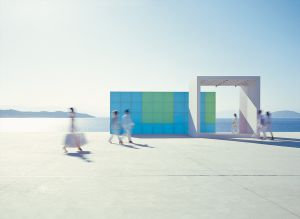The shift to solid-state lighting (SSL) is a chance to redefine lighting standards. In addition to improved environmental performance, SSL offers the potential to positively influence physical well-being – with quantifiable ROI.
But what role can architects and designers play in realizing the true potential of SSL as a digital technology?
One way is by partnering with manufacturers to overcome inertia within the lighting industry and create a new modality of light. This means recognizing:
- Why SSL is a replacement lamp technology
- The parameters for comparing lighting technologies must be qualitative as well as quantitative
- The unparalleled opportunities to integrate lighting into the workplace
The driving force for innovation in the lighting industry is often a comparison between incandescent bulbs and all alternatives (e.g., fluorescent and LED). The parameters for this comparison are sensible metrics such as the cost of the product itself, the cost of installation, operational costs (e.g., energy usage, expected product lifetime, and ease of replacement), and the quality of the light that the bulb produces.
But let’s assume that in a given instance, an SSL product delivering similar light quality beats an incandescent rival on all of these cost-based parameters. Does that make it better, or just cheaper?
Both; but the market is still being defined
Beyond the cost and environmental benefits, solid-state lighting technology offers the possibility to control, manipulate, and reproduce lighting environments. As yet, no one really knows what the market for digital light will eventually look like.
Right now, it is possible to measure and recreate almost any natural or artificial lighting environment. Will lights be sold in boxes labeled “Martha’s Vineyard on a Spring Afternoon”? Or will there be an app on your phone that, finding yourself in a place of particularly appealing light quality, allows you to remotely set your living room lights to match it perfectly?
Consider the music industry as a parallel example; it was slow to realize the opportunities that digitization introduced. It offered what were essentially replacement products – CDs looked like records, and they were sold like records.
But the new digital technology made the existing product a little better in that it was smaller, had more space for more music on each “record,” and one could skip quickly and easily between tracks. The true advantage of the technology was that it could be stored, transported, and shared at the touch of a button.
Now, the music industry looks very different for artists, consumers, the recording companies, and the music labels themselves. The old, more reticent record companies like EMI are gone or almost gone, and software companies like Apple are now the major players in the industry.
The lighting industry is now in a similar position to the music industry of the 1990s. The companies that survive and thrive will be those that embrace change rather than have it forced upon them.
Many companies in the industry are willing, they are just uncertain of how.
We in the design and architecture community can help to generate the momentum required to overcome this inertia
Development in new SSL products and design modalities requires dialog between architects, designers, and manufacturers. Just as designers and architects can inform manufacturers on how light might best be used – where, how, when, and why – the manufacturer must inform designers and architects on what can be made, what price-point is commercially feasibility, and which art is required to make it all possible.
In this way, we can drive a step-change in product innovation that befits the step-change in performance that SSL represents. We aim to add to the understanding of SSL and to encourage true innovation in the design field with this powerful new tool. It represents a major shift in the building industry.
SSL is a new modality in light, and with it comes the possibility of creating healthier, fresher, and more sustainable, exciting environments.


